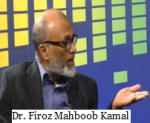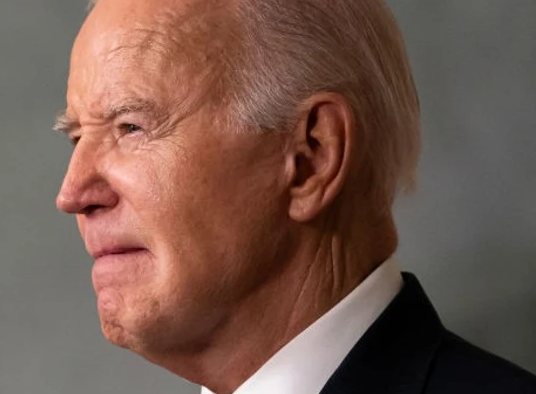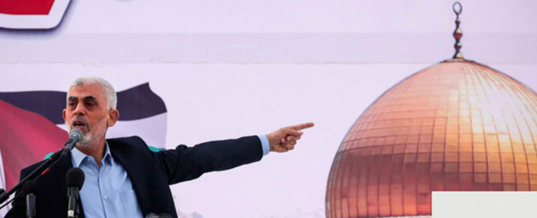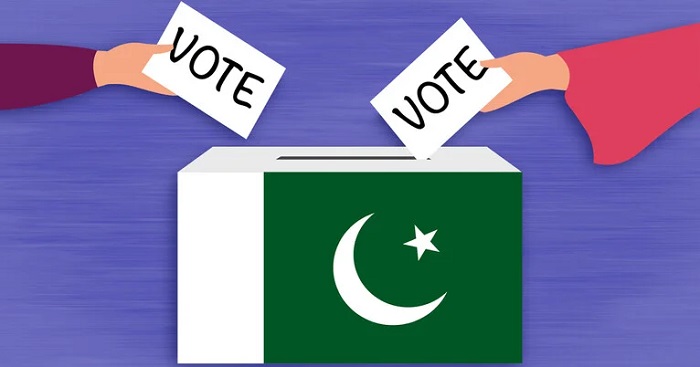
Face to Face with the Indian Muslims
-
News Articles
- at 14 September 2019
Dr. Firoz Mahboob Kamal
(Note: The writer visited India several times. He has visited Delhi, Mumbai, Kolkata, Jaipur, Agra, Ajmer and also travelled through the states of West Bengal, Bihar, Uttar Pradesh and Rajasthan. The article is based on personal observations and face-to-face talks).
The Muslim-phobia & the disbelief
In 2001 census, 13.4% of the Indians were found to be Muslims. Now it is estimated to be 15%. But most of the Indian Muslims do not believe this official figure as true. They believe their percent is much higher. They think it skilfully manipulated lie only to serve the anti-Muslim political agenda of the over-stated Hindu majority. The Hindu ruling clique strongly feels that a higher figure will generate more sense of deprivation among the Muslims, and may generate more unrest. Even 15 percent Muslim population creates a lot of Muslim-phobia among the ruling Hindu clique. They think it a significant increase in the Muslims from 9.9 percent share in 1951 census. Such panic in the Hindu mind gets reinforced by the falling Hindu population of 85 percent in 1951 to 79 percent. They foresee a declining Hindu majority in the near future in some strategic states like Assam, West Bengal and Kerala; in these peripheral states at least one-third of the populations are already Muslim. The ongoing deportation scheme of the Muslims from Assam is, in fact, a ploy to cut the size of the Muslim population. They blame such surge in Muslim population owes to infiltration from Bangladesh. Such allegation can only damage India’s relation with Bangladesh. Whereas the ground reality tells otherwise. Thousands of Indians are working in Bangladesh –especially in its garments sector and earn a huge amount of foreign currency for India.
Moreover, it is well recognized that the health and socio-economic indicators of wellbeing is significantly better in Bangladesh, and its economy is moving faster than India. The poor in Bangladesh enjoy a better opportunity for moving faster in the socio-economic ladder than in India; and no caste based system or religious scripture restrict their social mobility. Moreover, India – a country heavily infested with anti-Muslim tyranny and massacres offers little for its economic migrants.
The statistical data and the facts-finding Sachar commissions set up by the former Prime Minister Manmohan Singh reveals that 10 percent Muslim population don’t have even a 3 per cent stake in the government jobs. The government installs such commissions headed by some ex-judge or judges only to minimize the anger of the Muslims -usually after a major anti-Muslim massacre. Hence, such commissions offer little to cure the real problems. Although low figures of the Muslims in employment are enough to expose the government’s anti-Muslim policy, the actual figure of Muslim population -if revealed, may turn uglier to tarnish India’s global image -especially in the Muslim world. This may invite genuine global rebuke. Moreover, the revelation of the truth may further aggravate the Muslims’ antipathy towards the government and precipitate a major political upheaval. Many may turn even human bombs.
Such anti-government anger of nearly 200 million Muslims may cause a massive political explosion to reduce the country into a mess. A few years ago, India’s vulnerability was nakedly exposed while few attackers brought Mumbai - it's business heart, to a standstill. Therefore, manipulation of the Muslim population statistics stays as a strategic tool in the hands of the ruling Hindu majority. So, the actual number of the Muslims remains a highly secret and sensitive issue -as are the number of the Indian soldiers, details of nuclear bombs and the spy agents at home and abroad. However, despite all such strategies, the Muslims anger is now boiling up. It has already inflicted a major blow to Indian National Congress –the original architect of un-divided India. For more than 50 years, the Muslims used to be the traditional vote bank of Congress. But its huge disservices to Muslims are fully exposed -not only through thousands of anti-Muslim massacres and demolition of the historic Babri Masjid under its watch but also through massive deprivation of Muslims in political decision making and governmental jobs. Due to Muslims’ alienation, Congress now stands as a political orphan. It has lost its power in the central government with little hope to come back. It has also lost power in many states with significant Muslim population like West Bengal, Bihar, Uttar Pradesh, Assam and Kerala. The deserted Muslims have been compelled to negotiate with the regional parties for their survival. Hence, like a dinosaur, an all-India national political party is now extinct. With such irreparable political disintegration, this may turn the beginning of the end of India’s geographical integration. In such a void, the emergence of Bharatiya Janata Party (BJP) as a Hindutva fascist party has only added more fuel to its socio-politico-ethnic tension rather than solving it.
The hostile strategy
To keep the Muslim population figure low, government tactics are well-known. The most common policy is to keep the huge number of Muslims out of the census record, especially in the provinces adjacent to Bangladesh like West Bengal, Assam, Tripura, and in big cities like Calcutta, Mumbai and Delhi. In only one state of Assam, it is about four million. To justify such exclusion, they invent fabricated pretexts. The political parties like BJP (Bharatiya Janata Party), Bishwa Hindu Parishad (World Hindu Congress), RSS (Rashtriya Shevak Sangh), Shibshena, Bajrang Dal and other communal outfits make explosive issues out of the same fabricated story. They allege that millions of Bangladeshis have entered and settled in the bordering provinces around Bangladesh. They also demand immediate push back of these Muslims to Bangladesh. In Assam, along with anti-Muslim political agitation, thousands of Muslim men, women and children were mass-murdered in the eighties. And no one was punished for such heinous crime. Such demands for the push-back and the anti-Muslims agitations with that demand are more commonly arranged before any national census or voter list update. The government then gets easy pretexts to exclude a massive number of Muslims from the census well as from the voters' list. Even the rural Muslims of West Bengal who live in the slums of Calcutta, Bombay or New Delhi to make a living also get labelled as Bangladeshi and thus left excluded from the census and the voter list. The allegation they face is based on their mother tongue, which happens to be Bengali – conveniently forgetting the fact that West Bengali Muslims also speak the same language. Since inclusion in the census is required as a proof for citizenship, so large numbers of the Muslims are left disqualified to register as an Indian citizen. This keeps the door open for the government to push them back into Bangladesh at a suitable time.
Highly inflammatory news and feature articles demonizing the Muslims and blaming them as illegal intruders appear regularly in the Indian media. The tune and flavour of those reports are almost always the same. The Muslims are blamed for causing a dangerous demographic shift in Indian population. For example, the Time of India once published a claim of a central Jubofront (Youth Front) leader in a mass-gathering that Muslim population rose significantly in Assam and West Bengal. The paper added its own hype to the fear that if such increase in Muslim population is not checked now then these provinces will turn Hindu minority province in near future. The paper projected it a great threat to India’s integrity and a prelude to the creation of another Pakistan in its own territory. During my six months’ stay in India I found recasting of such inflammatory news almost once or twice a week on the front page in major Indian dailies like the Time of India, the Hindustan Time, Indian Express, the Statesman and many others are in the forefront to spread such anti-Muslim venom. So the anti-Muslim fervent never gets an opportunity to die out, rather continuously receives a new lease of life. The communal parties thrive on such media-engineered phobia and anti-Muslim hatred.
Once I read an article in the Hindustan Time under the headline "Hindu Population and Muslim Population". The writer tried to tell that there are two different rates of population growth in India: one for the Muslims and another for the Hindu. And he tried to prove that the growth of the Muslim population is much higher than that of the Hindus. He cautioned that the Hindu domination would soon come to an end in India if the Muslim population continues to increase with the current rate. I found it a morbid delusion; only a man with pathological hatred against Muslims can believe such politically motivated speculation how the Muslims with its current 15 % proportion can emerge as the majority in India – which did not happen even in about 700 years of Muslim rule. I also wonder how these people can sleep at night with such tremendous fear. I noted that the Hindustan Time, the Time of India and India Today have special interest in publishing such views. These types of much spin-added news and feature articles are circulated through these papers by different names and in different perspectives at least few times a week. These articles are published as regular refreshers to the Hindu communal so that the anti-Muslim sentiment is always kept alive.
The role of the Indian newspapers and magazines to generate such fear in the Hindu mind is on the increase. There are few exceptions like the Frontline, but the circulation of those newspapers is minimal. Once I had a long discussion on the issue with one of the leading Indian economist from Kerala. Although a Hindu, but I found him very rational and thoughtful. He studied and taught economics in the MIT in the USA and happens to be a close friend of former Prime Minister Monmohan Singh. He agreed with my observation. I also told him that how India can have a friendly relation neighbouring Muslims countries with such a Prime Minister toxic hatred against the Muslims.
The biased bureaucracy
I found a very common notion among the Muslims that the Indian governments' civil servants are more communal and Muslim basher than the political workers. So there exists an active non-co-operation in the bureaucracy towards reducing the Muslims’ deprivation. Such non-co-operation becomes more evident during or after any anti-Muslim massacre. These bureaucrats then make it impossible to quickly control the killing or undertake any impartial investigation. So the demolition of Babri Masjid or massacre and destruction in Mumbai and Gujarat could continue for many days in broad day lights. And the people in charge could not find any murderer for the dead three thousands in Gujrat. In a civilised country with a huge army and police force, the criminal killers cannot enjoy such a free hand in planned mass-murder and destruction. But that happens in India again and again.
These Indian bureaucrats are more active to preserve their own vested interests; they possess little interest to cater to services without racial, religious or linguistic bias. In their midst, the faith of Muslim works as the greatest disability. Any small attempts of doing justice towards the Muslims are viewed suicidal by them. And it has a long history. During the British rule, the Bengal Pact forwarded by Chittaranjan Das and Hussain Shaheed Suhrawardy ended in a fiasco due to these bureaucrats. The Pact promised more employment opportunities for the Muslims; hence was detested by the Hindu elite. The vested interest that they established in the administration as the most obedient servants of the British raj was kept unaltered even in independent India. The British rule survived in India for 190 years because of their deep obedience to those foreign imperialists.
The colonial foreigners have gone, but now they enjoy their full liberty to execute their dominance over the Muslims and minorities. They received huge benefits from the British for their servitude. After 1947, these mercenaries proved to be lucky to protect their all privileges fully. Now in India, they want to ensure the same privileges for their future generation. The possible advancement of the oppressed 200 million Muslims may make some crossover into their rights; hence consider them as a real threat. So, Muslim hatred gets more intense among them. In fact, they use the state apparatus as a powerful weapon to protect their territory against any Muslim advancement. As they made an alliance with the British rulers, these communal bureaucrats also formed an alliance with the communal politicians to promote their self-serving cause. This why, Babri Masjid could be destroyed in daylight during the whole day without any preventive effort by any police –as if there existed no police in India on that day to stop that crime. The Indian Prime Minister Narsimha Rao, his whole ministry and the whole civil and military bureaucracy showed their robust inaction. They silently watch the destruction on TV; probably celebrated it, too.
One can easily sense the tip of the anti-Muslim ice-berg in Indian bureaucracy after landing at Bombay or Calcutta airport from a European or Middle Eastern cities with a Bangladeshi passport. It seems they find it difficult to swallow the pride of a Bangladeshi Muslim travelling worldwide with an international passport. Probably they think such privilege is only the right of the upper caste Hindu -as it is customary in India. The communal nature of the Indian administration and the police becomes more evident during any event of Muslim mass killing. The police become more active in suppressing the Muslim victims than the Hindu killers. More Muslims are taken to jails than the Hindu attackers -as happened in Muslim massacre in Mumbai and Gujarat. In both places, numerous Muslims were killed or arrested and oppressed by the state police. They also faced criminal charges. In Meerut, Indian police added a new chapter to its already tainted record. They dumped hundreds of Muslim corpses into the nearby canals to show the low number of Muslims deaths in the massacre. During the demolition of the Babri Masjid, they indeed protected the militant Hindus so that they could accomplish the crime without any hindrance or resistance from the Muslims.
After the Masjid demolition, the Hindu terrorists started the Muslim massacre. According to government statistics, more than two thousand Muslims were murdered in Bombay alone; the fire was set to thousands of Muslims’ houses and shops. Women were raped, and Muslim babies were thrown into fire. What is more surprising is: the police were not able to find a single murderer or looter -as if nothing happened in that systemic pogrom. They made history in Nellie in Assam. Thousands of Muslims were killed in the eighties, but not a single murderer, rapist or arsonist had to appear before the judge to receive any punishment. Prime Minister Rajiv Gandhi signed an accord to stop all judicial investigation.
While the bureaucrats are so much impregnated with anti-Muslim venom, it is not surprising that these officers will discover scores of fabricated reasons to exclude the Muslims from the voters' list or census record. The sheer lack of their interest in protecting Muslims’ lives and property becomes more evident from the lack of judicial prosecution in any anti-Muslim genocide. But such failures make a little political and moral impact in India’s civil administration; nor are they considered any moral or ethical disability for the job. Therefore, such anti-Muslim killings happen again and again –rather with more frequency and ferocity.
The neglect
The Muslim population in Jaipur is quite large, but very few people could tell me the actual number. They live in a tiny area of the city. The new constructions are booming in all directions in the outskirts, but the Muslims are not moving to those areas. They fear, anytime the Hindu neighbours may turn murderous against them. The Muslims learned such harsh reality from the previous massacres that happened mostly by the hands of the Hindu neighbours. So in Jaipur, like any other Indian city, the heavily-congested old city centre is the abode of the Muslims. There is no park, no wide road, no clean drain, no good school or college – even no arrangement for regular removal of the garbage. Piles of garbage covered with thick armies of flies and mosquitoes were visible even in the close vicinity of living quarters. Most of the civic facilities are absent there. I saw some horrendous pictures of such neglect also in Ajmer –the city of the great shrine of Khawja Moinuddin Chisti. While visiting the famous shrine, I needed to go to the public toilet located at its backyard. But I could not proceed. The feces were overflowing its dirty footpath. This famous shrine brings in a lot of money to Ajmer city and substantial foreign currency to India, but its basic facilities are kept in utter neglect. It depicts a clear picture of how the provision of fundamental services to the Muslim visitors gets totally ignored by the Hindu administration. Even in Shahjahan’s Masjid in Agra, the mark of chronic neglect was revealing. But in all famous Hindu temples, I found a different standard.
The situations are not different in Delhi, Bombay, Calcutta and other cities. In all of these cities, the Muslim dwellings are situated in unhygienic and congested city centres. The reason is the same. The Muslims suffer from a serious lack of safety and security in the prosperous areas – because of its Hindu dominance. During the Muslim massacres in the past, the victimized Muslim families happened to be the inhabitants living in the Hindu-majority areas. During any anti-Muslim slaughter, the neighbouring Hindus always appeared ready to annihilate them with huge jubilation. Those killings did not need any outsiders. As soon as any riot starts, the Muslims are immediately robbed of their houses and properties. As if, there were ready-made forces standing very close for doing the job. In fact, such readiness is furnished by the Indian media and the communal political parties by their continuous anti-Muslim hate campaign. The Muslim houses are gutted, the women are raped and shops are set on fire. Murdering the Muslim men, women and the children remains on the top of the agenda. Probably the killers believe that such murder is the most effective way of elimination of the Muslim population in India.
What is more shameful is: these kinds of heinous atrocities are committed not only by the criminals of the localities but also by the so-called educated and well-off Hindus –even by academics and other professionals. The so-called intellectuals not only help in instigating riots, but also actively engage themselves in the arson. A doctor from Baireli recalled how his Hindu neighbour's gunshot killed a Muslim professor. This is the reason why the Muslims have lost trust in Hindu neighbours and left the Hindu-dominated areas and gathered in over-crowded Muslim quarters. Because they perceive saving a life is more precious than living in a good locality. Since located at the centre, these areas possess little room for further expansion. So the problems are multiplying with the ever-increasing Muslim population.
On the other hand, the Hindus are establishing their absolute dominance in the new residential areas. The political leaders –both in the government and in the opposition, show little political commitment to resolve these inhuman issues. They only pursue to keep the status quo. Surprisingly, such a huge humanitarian problem couldn’t be a political issue in India!
The Muslim migration
After 1947, the mass migration of the Indian Muslims took place primarily in two ways - external migration and internal migration. The external migration was basically exodus to Pakistan. And the goal of the internal migration was to leave villages or non-Muslim dominated areas to settle in the Muslim-dominated areas in the cities. The Indian Muslims are facing similar situations that the Jews experienced in Germany, France, Poland, Russia, and other European countries. Confronted with the persecution by the Christians, they withdrew to the ghettoed life in the heavily congested areas of the European cities. Likewise, every major city in India is divided into two sub-cities: the smaller congested one for the Muslims and the other one for the non-Muslims. Indeed, in every Indian city, the Hindu-Muslim dividing line is all too obvious to ignore. During the riot, this division-line becomes the natural border between the warring Hindus and Muslims. Many Ph.D. holders or university professors in Bangladesh or Pakistan may fail to understand the famous “Two-Nation Theory”; but in India, its visibility is quite distinct even to a layman. An illiterate person can see it and feel it in every moments of his existence. The current inhuman condition of the Indian Muslims explains why the movement for the creation of Pakistan was so strongly felt in Hindu majority states of India; and why the Indian Muslims were eager to migrate to Pakistan even at the cost of abandoning the dearest lands, houses, business and dear ones where their forefathers grew up and settled for hundreds of years.
The deprivation
The Jaipur city has many Masjids. Most of these are old, and built during the British rule. I could not find a single Masjid built in recent years. Every time of prayers, I intentionally offered my prayers at different Masjids (I visited at least at six of them) -so that I could get the opportunity to see different people each time. I found every Masjid to be old, and some of them are dilapidated. The floors, the prayer mats, the walls and the ablution areas of those Masjids told the story of deprivation and poverty. Jaipur is a provincial capital, but its Masjids do not match even the standard of a district Masjid in Bangladesh. Once I got the opportunity to offer my Eid prayer in one of the Jaipur Masjid. It was one of my very saddest experience during my whole stay in India. People’s attire on a festive day gives an accurate depiction of a people’s happiness and prosperity, at least on that day, people do not hide their reality. At least on that day, people’s inner self gets an outward expression. I offered my Eid prayer in a Masjid in the outskirt of Jaipur city, near to its international airport. It is also near to one of the business hubs of the city -known for its traditional Rajasthani bed-sheets and garments. On that Eid day, to my utter surprise, I could not find any joy and jubilant festivity in people who came to offer the Eid prayer. Even the Masjid did not receive any special treatment for the Eid. Prison people do not show any joy in their march, the same thing I saw in people who came for Eid prayer. Even very few people joyfully embraced each other after the Eid prayer –which is very common in any free Muslim country. Poverty was evident from their dress. The facial expression showed a very gloomy frustration. Probably poverty, alienation and marginalization have robbed their inspiration for any joyous living and cultural expression.
In most Indian cities, the number of Masjids did not increase even though the Muslim population soared. I saw similar picture in Delhi, Agra and Bombay. The existing Masjids cannot accommodate the musallies especially on Friday and Eid days. Consequently, the Muslims become compelled to stand on the street during Friday and Eid prayers. As a consequence, this creates traffic jams in busy areas. And such traffic jams generate utter hatred in Hindu minds against the Muslims. Without understanding the real reasons for such problem, the Hindu asks the government to stop Muslims’ outpouring onto the streets. The Hindu communal organizations made huge issues out of it, but they never ask the government to allocate adequate lands for building more Masjids to accommodate the ever-increasing Muslim population. Whereas performing salah in a proper Masjid environment is the most fundamental right of the Muslims in any country. But in India, such right goes to the bin in front of these Hindu eyes. Whenever the Muslims take their initiative to build a new Masjid they face fierce resistance from the Hindu administration. While sitting in a Masjid in Jaipur, one tablighi man told me how the government stopped further extension of a Masjid in Jaipur. Since none of the Masjid in Jaipur could accommodate all the attendees during any large Tablighi Ijtema, the local Muslims took initiative to construct a two-storey big Masjid in the outskirt of Jaipur city. But the government did not permit to execute the plan. Since such Masjid could be a visible Muslim icon, the BJP government of Rajasthan rejected the plan on the ground that it does not want any such new icon of any Islamic significance in their state. They did not hide to remind that India is a Hindu country, so its priority is to promote icons that fit with its own identity.
At some places, the masjid surroundings had been annexed illegally by either government or non-government organizations. I witnessed the process of dispossessing all the surrounding land of a Masjid located near the Jaipur international airport by the government’s Public Works Department (P.W.D.). The imam of the Masjid hailed from Bihar province. The Masjid was built during the rule of the British. There is a residence in the Masjid premise to provide accommodation for the imam, but that has been occupied by the employees of P.W.D. I saw many people gossiping in that room. In leisure times, the imam has to sleep right on the floor of the Masjid. On the huge waqf compound of the Masjid lie the worn-out metallic tools belonging to the P.W.D. After the prayer, I talked with the attendees at the Masjid. Knowing that I was a Bangladeshi, their enthusiasm got quite a bit of boost. I had the opportunity to ask them many questions. They also wanted to know many things about Bangladesh. At the time, the Bharatiya Janata Party (BJP) was ruling Rajasthan. There were no riots, but oppression on the Muslims was taking place in other ways. The educated Muslims had no chance to secure jobs. They did not have other alternatives but to accept low-paying jobs at the factories owned by the Hindu businessmen. As a result, they have little zeal for higher education.
While strolling along the streets of Ajmer, I came across a retired headmaster of a local secondary school. All four of his children were university graduate, but no one got any job. He lamented, "The Muslims have no other alternatives but to do menial chores under the Hindus. Some are living from hand to mouth by begging at the major [shrine]". We were discussing while standing on the main street in front of the major. The shopkeepers were doing brisk trade on both sides of the road. Most of the buyers were Muslims travellers –many from other parts of India and many from Bangladesh. The headmaster continued, "Here you can see hundreds of shops but none of the shops are owned by the Muslims - not even the shops that sell prayer rugs and tasbees [counting beads] even though the Muslims comprise 40% of the population of the city of Ajmer. Even in Muradabad, Aligarh, Baireli where Muslims are somewhat successful in businesses, their shops and houses were burnt many times under the pretext of different flimsy excuses. This is how attempts were undertaken to drive the Muslims away from their established position in business. I talked with several shopkeepers at Agra - the city that boasts Taj Mahal. They sell miniature marble replicas of Taj Mahal. Most of their highly educated relatives did not get any job. The Muslims can't even get near to the ladder to socio-economic development, let alone climbing up the ladder. Stagnation prevails over their entire existence. Apart from business, the Muslims are also gradually driven away from the higher education sector.
The policy of exclusion
Aligarh Muslim University was founded by the Muslims, with Muslims donation from all over India. After India’s independence, new laws had been passed to curtail the admission of Muslim students and introduced the admission of the Hindu students. The logic shown is that the Hindus must have equal rights of admission in every institution in secular India even in Aligarh. As a result, the Aligarh Muslim University has lost its Muslim identity. Instead, the Hindu fundamentalists of the BJP have established their stronghold. These days, the city is remembered more for brutal anti-Muslim skirmishes than for the name of the university. I heard from an ex-Aligarh Muslim doctor about his story of how he was deprived from getting admitted into the post-graduation program due to the meddling of ever-increasing Hindu faculty members. He said that Hindus comprise more than half of the number of teachers of this traditional Muslim University. Whenever some Indian Muslims working in the Middle-East countries take initiative to build schools, colleges or madrasahs at their own cost for the backward Muslims, the Hindu media starts storms of propaganda against such venture. BJP and other communal parties campaign against establishment of such Muslim schools. They complain that an uneven competition has been started which will help the Muslims to go ahead of the Hindu. They demand equal opportunity for the admission of the Hindu students at these institutions, which are built at the sole expense of the Muslims' hard earned money. The government yields to their demands.
Consequently, not only the Hindu students get admitted, but also the Hindu teachers are given appointments. The situation is such that the Muslims can't grow up in the way they want. Everywhere, including at religious institutions, there are government interferences.
Recent posts
-

Mark Carney, Pierre Poilievre, and Donald Trump
10 March 2025 -

Defeating Liberal and NDP Muslim Candidates is Thawab
24 February 2025 -

Why Should We Vote?
19 February 2025 -

The Genocidal Legacy of Joe Biden
07 January 2025 -

Yahyah Sinwar: Anti-Terrorist Hero
17 October 2024 -

Pakistan: Things to Fix List
07 February 2024
